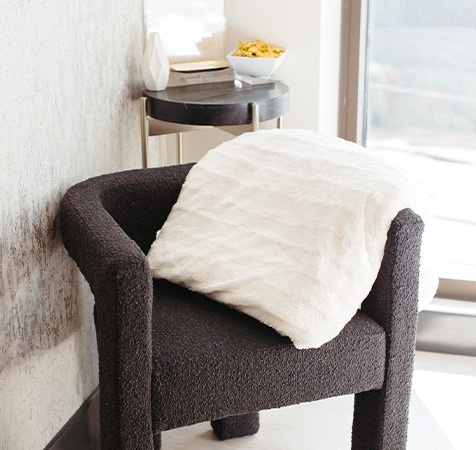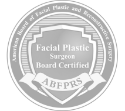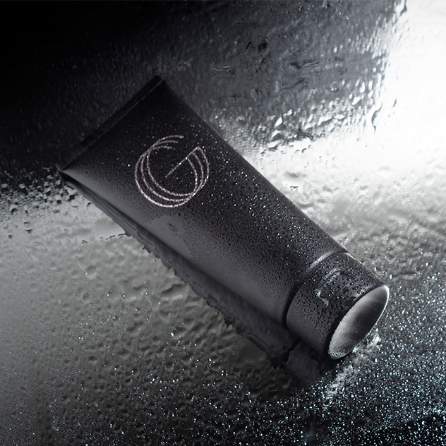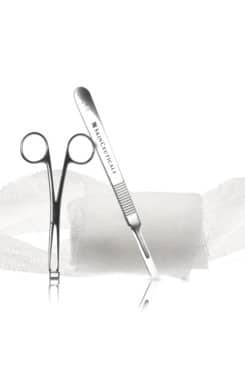Dermaplaning is the oldest “new” skincare procedure for women: While it’s recently experienced a widespread revival, it’s actually been in use for decades. Many of Hollywood’s golden-age stars, including Marilyn Monroe and Elizabeth Taylor, relied on Dermaplaning to give their skin the radiant, glowing look that old photographs still preserve for us. Indeed, legend has it that even Cleopatra used a form of Dermaplaning to maintain her allure! Read on to find out how this convenient, low-risk treatment can enhance the appearance of your skin:
WHAT IS DERMAPLANING?
Dermaplaning is a non-invasive, chemical-free deep exfoliation technique. During Dermaplaning, a specially-designed blade is dragged carefully across the skin in sweeping, feather-light motions. Unlike conventional shaving, this process will not harm or irritate the skin as it works with the direction of your vellus hair (peach fuzz) and not against it.
In addition to removing any facial hair you have, Dermaplaning scrapes away dead skin cells and prompts the skin to produce new collagen and elastin. In this way, it works much like other skin rejuvenation techniques (e.g., chemical peels and dermabrasion), without causing the same amount of redness or irritation. It’s the natural, gentle treatment of choice for people who are looking to refresh their appearance.
Benefits

- Texture and dryness
- Peach fuzz hairs
- Dead skin cell buildup
Corrects

- Instant results
- Smoother, brighter skin
- Better product absorption


ELEVATE YOUR CONFIDENCE
IN A LUXURY SURGICAL PRACTICE
Investing in your confidence is a big step, and your choice of facial plastic surgeon should reflect it. We offer a premier, luxury environment where you can focus on yourself.
With the help of our professional and knowledgeable team, you can begin your journey toward a more confident you. We’ll take every step to ensure you feel comfortable, pampered, and acknowledged. Begin your refined and cultivated experience here at Gilpin Facial Plastics & Aesthetics.
WHAT CAN DERMAPLANING DO FOR ME?
In addition to getting rid of unsightly facial hair, Dermaplaning can be used to treat a number of imperfections in the skin. It is frequently used to correct uneven pigmentation (such as signs of sun damage, age spots, and discolored patches). It can help to resurface skin that has been impacted by mild acne scarring and it can reduce the appearance of fine lines and wrinkles, too.
HOW LONG WILL I HAVE TO WAIT TO SEE RESULTS?
Dermaplaning yields immediate results. Right after treatment, you will notice that your skin looks brighter and “fresher.” It will also feel more supple and smooth. These results will become more enhanced over the following week as your body generates new collagen, making your skin firmer and more radiant.
Dermaplaning can be re-administered after 3 to 4 weeks if you would like to retouch your results. Having Dermaplaning more often than this is not necessary as the procedure removes several weeks’ worth of dead skin cells and oil buildup.
WHO MAKES A GOOD DERMAPLANING CANDIDATE?
Almost everyone can have Dermaplaning because it does not require the use of any chemical agents, nor is it invasive. The only possible exception to this rule are those people who have open wounds on their face (including severe acne), people with highly compromised immune systems, and people with blood disorders. This procedure is, however, completely safe for pregnant women and nursing mothers. In fact, many moms rely on Dermaplaning to keep their skin soft and smooth while they are expecting. If you have a medical disorder that prevents you from using other facial peels or you are pregnant, Dermaplaning is probably right for you.
Dermaplaning is also appropriate for use on patients who have habitually dry or very sensitive skin. If you are allergic to other popular skin treatments, then the chemical-free nature of dermaplaning will allow you to experience rejuvenation without the irritation.
Dermaplaning is better for those who have an excessive amount of “peach fuzz” than many other skin rejuvenation treatments. When vellus hair is too thick, it traps a great deal of dirt, oil, and dead skin particles, which get lodged deep within the hair follicles. Dermaplaning is excellent at extracting all of this buildup, leaving your skin feeling completely clean and refreshed. What’s more, removing this buildup can help to prevent the development of acne.
Note that if you are able to have other facial rejuvenation treatments, this procedure pairs excellently with chemical peels. Feel free to ask us about the possibility of having additional treatments administered along with Dermaplaning.
PATIENT REVIEWS
DOES DERMAPLANING HAVE ANY RISKS OR SIDE-EFFECTS?
No adverse reactions to Dermaplaning have been reported and the procedure is completely safe for suitable candidates. It’s also entirely painless. Additionally, contrary to popular belief, facial shaving absolutely does not cause hair to grow back thicker. All you will need to do after you have Dermaplaning is apply sunscreen to protect your skin against sun damage (and you should do that anyway)!
If you’re ready to get your glow on, just contact our Nashville plastic surgery office and book a consultation. We look forward to helping you discover the lost art of Dermaplaning, right here in Tennessee.
HAVE A QUESTION?
Are you looking to enhance your appearance and boost your confidence? Complete this form to learn more or schedule a consultation with one of our experts at our Nashville, TN office. From facial plastic surgery to lasers & aesthetics, we offer a variety of services that help you put your best face forward.
Ask a Question














